- Home
- Alison Weir
Queens of the Conquest: England’s Medieval Queens Page 15
Queens of the Conquest: England’s Medieval Queens Read online
Page 15
William’s love for his wife, and the good influence she exerted over him over thirty years of marriage, were a constant blessing—a blessing that, sadly, he was not to enjoy for much longer.
—
The nature of Matilda’s final illness is not known. All the Norman queens died of natural causes, but it is impossible to be specific as to what actually killed them. Descriptions of illness in the chronicles are often vague, with the terms “fever” and “dropsy” covering a multitude of ailments. Orderic believed that Matilda died of a broken heart,15 said to have been brought about by worrying over the hermit’s prophecy. There was plague in Caen in 1083, but that is unlikely to have killed her,16 for she was ailing for at least a year. When her condition deteriorated in the autumn, William was summoned urgently from England to Rouen, in time to be with her in her last days. She may have been attended by Baldwin, Abbot of Bury St. Edmunds, who acted as physician to the King and Queen both in England and in Normandy.
In her will, dated 1083,17 and dictated in William’s presence, Matilda named her youngest son, Henry, heir to her English estates, which had once belonged to Brihtric Meaw.18 Her other bequests afford us a fascinating glimpse of the treasures of an early medieval queen:
I give to the abbey of Holy Trinity my tunic, worked at Winchester by Alderet’s wife, and the mantle embroidered with gold, which is in my chamber, to make a cope. Of my two golden girdles, I give that which is embroidered with emblems for the purpose of suspending the lamp before the great altar. I give my large candelabra, made at Saint-Lo, my crown, my sceptre, my cups in their cases, another cup made in England, with all my horse trappings and all my gold and silver vessels. And lastly I give the lands of Quettehou and Cotentin, except those which I may already have disposed of in my lifetime, with two dwellings in England. And I have made all these bequests with the consent of my husband.
Unless Matilda had already given some things away to her family, her personal possessions did not amount to much, given her exalted status. Her epitaph (see below) records that she was “poor to herself and rich to the needy.” Probably, despite her great wealth, she was not materialistic.
In the small hours of Thursday 2 November 1083, “on the day after All Saints,”19 Matilda’s condition worsened. “Growing apprehensive because her illness persisted, she confessed her sins with bitter tears, and after fully accomplishing all the offices that the Christian profession requires, and being fortified by the life-giving Sacrament,” died peacefully in her bed,20 after Prime (in the first hour of daylight). She was fifty-two at most. That was in fact a good span in an age in which average life expectancy was around thirty-five, men were old at fifty and many women died young in childbed. The average age at death of England’s twenty medieval queens was just under fifty. The shortest-lived, Isabella of Valois, died at twenty, and the longest-lived, Eleanor of Aquitaine, at eighty-two. Compared with this, the average age at death of the five Norman queens was about forty-seven.
Cast into loneliness after thirty-three years of marriage, William was inconsolable. “He showed by many days of the deepest mourning how much he missed the love of her whom he had lost. Indeed from that time forward, if we believe what we are told, he abandoned pleasure of every kind.”21 The marriage had been a most successful partnership: he had been “rich in empire, children, wife,” according to his epitaph by Baudri de Bourgueil, and apart from when Matilda had aided Robert, there is no record of any discord between them. When she was no more, William never looked at another woman.
Hours after her death, Matilda’s body “was carried to the convent of the Holy Trinity” at Caen, her own foundation. The Queen’s bier was attended by a “great throng of poor people,” many of whom she had befriended, and who greatly mourned her.22 Her corpse was reverently received at the portal of Holy Trinity by a long procession of bishops and abbots, who conducted it into the choir and laid it before the high altar. William had her buried in Holy Trinity with great magnificence, ordering “a most splendid funeral”23 that lasted for two days. The obsequies were celebrated by monks, with great pomp, and the Queen’s body was interred with deep respect by many bishops and abbots between the choir and the altar.24
The tomb raised by William to Matilda’s memory in the middle of the choir was “wonderfully” decorated with gold and precious stones.25 The thirteen-verse Latin epitaph, still legible and carved in letters of gold along the edges and down the center of the plain black Tournai marble ledger stone (which miraculously survives), attests to her faith and charity, and was recorded by Orderic:
Here rests within this fair and stately tomb Matilda, scion of a regal line; the Flemish Duke [sic] her sire, and Adelais, her mother, to great Robert, King of France, daughter, and sister to his royal heir. In wedlock to our mighty William joined, she built this holy temple and endowed it with lands and goodly gifts. It was here her holiest work was seen, this shrine, this house, where cloistered sisters dwell, and with their notes of praise the anthem swell, endowed and beautified by her earnest care. She was the true friend of piety and soother of distress, enriching others, indigent herself, reserving all her treasures for the poor; and by such deeds as these, she merited to be a partaker of eternal life, to which she passed November 2 1083.26
Two elegies to Matilda—“Cere si fortes” and “Tempe qui nostra”—were composed by the French poet Fulcoius of Beauvais.27 They proclaim that she had proved her mettle to William’s subjects, and that “the common people, the rich, every gender and age, the whole clergy, every tongue, every class” had come to admire her “just” and “prudent” disposition. “If she could be brought back from death through tears, money, fair or foul means, then rest assured there would be an abundance of these things.” Fulcoius wanted this inscription placed on her tomb: “Matilda, Queen of the English, known for her twofold honour, ruled over the Normans, but here rests entombed in good state, blessed in title that Nature cannot revoke from her. O twofold light of November, it is a little plot, a small pile of ash, but nevertheless a source of glory and grace.”28
Orderic remembered Matilda as “the most amiable, the most courteous, the most intelligent woman of her time; the most chaste, the most devoted to her husband, the most tender towards her children.”
The tomb was opened in 1512 in circumstances that are obscure. In 1562, the Calvinists who sacked Caen during the Reformation destroyed it and Matilda’s coffin, broke her effigy, and stole a gold ring set with a sapphire from one of her fingers. The ring was given to Gaspard de Coligny, Admiral of France, who, moved by the grief and anger of Abbess Anne de Montmorency at the desecration, returned it to her. The following year she gave it to her father, Anne de Montmorency, Constable of France, in the presence of King Charles IX.29 Abbess Anne had Matilda’s bones collected and placed in a small lead casket and piously reinterred beneath the original black marble slab—all that was left of the desecrated tomb—in the middle of the choir.
In 1702, the nuns built a new tomb over the original grave site. It was a coffin-shaped sarcophagus of black and white marble, surrounded by iron spikes and hung with an ancient tapestry. This tomb was destroyed in 1793 during the French Revolution. The lead casket, however, was spared and placed in a chapel in the abbey of Saint-Étienne. In 1819 it was reburied in the middle of the choir of Holy Trinity, probably slightly east of Matilda’s original resting place,30 and the original black marble stone bearing her epitaph, and measuring six feet by three,31 was restored and placed over her grave. In 1819 and 1959 the lead casket was opened and the bones in it examined in the hope of conclusively identifying them as the Queen’s and discovering more about her.
Matilda was mourned throughout Normandy, where she was far better known than in England, and Masses were offered up in many churches for the repose of her soul. At Saint-Evroult, as in other places, acts of remembrance were performed.32 As they had done while Matilda lived, William, many of her blood kin and the lords who had known her endowed abbeys and offered up treasure to
Heaven so that perpetual intercessions could be made for the repose of her soul.
Matilda had spent between three and four years in total in England, the land of which she was queen, yet her influence in her husband’s kingdom had been considerable. “Her death represents tragedy for both the clergy and the common folk,” it was said. She would be “wept for by the English and the Normans for many years.”33 “After the death of the glorious Queen Matilda, King William was deeply involved in severe troubles, which closed around him like stormy clouds.”34
According to a fifteenth-century chronicler (who had evidently not heard of the harrying of the north), he “became a thorough tyrant,” whereas, as long as she had lived, he had heeded her advice and “treated the English kindly.”35 This is perhaps borne out by a posthumous tribute paid to Matilda in a eulogy by the poet Godfrey of Cambrai, Prior of Winchester: “The King dominated his enemies with arms, and you, Matilda, you dominated them with peace. And your peace turned out to be far more efficient than war.”36
1
“Casting Off the Veil of Religion”
William did not long survive his beloved wife. According to Orderic, the peace between him and Robert Curthose, “which had taken so long to achieve, was soon clouded. The stubborn young man contemptuously refused to follow or obey his father, while the quick-tempered King continually poured abuse and reproach on him in public for his failings.” Other evidence suggests that Orderic exaggerated the rift between father and son, for it is clear that at times they did cooperate.
On 9 September 1087, while besieging the town of Mantes, west of Paris, William fell from his horse and was mortally wounded. He died abandoned, “without a friend or kinsman near his bed,”1 and was buried in the abbey he had founded at Caen, leaving England securely established under Norman rule. The Anglo-Saxon Chronicle observed: “He was a very wise and a great man, more honoured and more powerful than any before him. Amongst other things, the good peace that he made in the land must not be forgotten.” From the 1120s at the latest he was popularly known as William “the Conqueror,”2 and William of Malmesbury also refers to him as “William the Great.”
The usual method of succession in European monarchies in medieval times was through primogeniture—right of the firstborn—in the male line, passing to the sons of the monarch in order of seniority, followed by their children, and only then, failing any male line, to the daughters. But that principle had not fully evolved in Norman times. William left Normandy to his eldest son, Robert Curthose, and England to his next surviving son, the wily, able, but ruthless William Rufus, who now had a broad girth like his father. Because Rufus had been born after the Pope’s ban on his parents’ marriage had been lifted, his legitimacy was indisputable, and this may have been one reason why William left his kingdom to him—another being that Robert was barely known in England; he had been destined as the heir to Normandy since before his birth, and had long been associated with his mother in its government. Rufus, moreover, had always gotten on well with his father, unlike the rebellious Robert.
William had never given his youngest son, Henry, possession of the lands Matilda had left him, but had bequeathed him £5,000. Henry petitioned Rufus for his maternal inheritance, but in 1088 Rufus gave Matilda’s lands to one of his courtiers, Robert FitzHamon, probably to spite Henry.3 Understandably there was to be continual strife between the landless Henry and his brothers.
William II was a harsh and unpopular king. He never married and his court was seen as decadent, with churchmen frowning on the King’s effeminate favorites, who wore long hair, beards and extravagant shoes. William Rufus fueled the wrath of the Church by appropriating its income and resisting reform, thereby earning himself a bad monastic press. “In his days righteousness declined and evil of every kind towards God and man put up its head. Everything that was hateful to God and to righteous men was the daily practice in this land during his reign. Therefore he was hated by almost all his people, and abhorrent to God.”4
—
William Rufus was unmarried, but a possible consort was near at hand. Queen Margaret of Scotland had always envisaged “the elevation of sons and daughters of hers to the summit of earthly dignity.”5 To that end, her daughters, Edith and Mary, were “educated from infancy among the nuns of Wilton and Romsey, where letters were trained into the female heart.”6 It was the best education they could have had anywhere in the British Isles.7 These two great royal Saxon foundations lay in Wiltshire and Hampshire, in the heart of the ancient Anglo-Saxon kingdom of Wessex, and were renowned for their sanctity and their erudite traditions.
In 1086, the girls’ aunt, Queen Margaret’s sister, Christina, became a nun at Romsey Abbey, and Margaret sent Edith and Mary “to be instructed by her in holy writ.” The great abbey of Romsey, which still stands in all its Romanesque glory, had been founded in 907, when King Edward the Elder established a community of nuns under the rule of his daughter Elfleda. It was refounded as a Benedictine house in 967 by King Edgar. After being sacked by Viking raiders, it was rebuilt in stone around the year 1000. Since then, Romsey had become famous for the education in letters and morals it afforded the daughters of kings and nobles.8 Edith and Mary were to stay there for seven years. “These princesses were a long time pupils among the nuns. They were instructed by them, not only in the art of reading, but in the observance of good manners.”9
The trouble was that, from the first, Christina did her best to force Edith to become a nun, or at least wear a nun’s veil. Edith later recalled, in a statement made to the Archbishop of Canterbury: “I do not deny having worn the veil in my father’s court, for when I was a child, my Aunt Christina had put a piece of black cloth over my head.” At Romsey, “I went in fear of the rod of my aunt,” who “used to put a little black hood on my head, and when I threw it off, she would often make me smart with a good slapping and a most horrible scolding, as well as treating me as being in disgrace. That hood I did indeed wear in her presence, chafing at it and fearful; but as soon as I was able to escape out of her sight, I tore it off and threw it on the ground and trampled on it; and in that way, although foolishly, I used to vent my rage and the hatred of it that boiled up in me.”10
When Edith approached puberty, Christina made her wear the veil “to preserve me from the lust of the Normans, which was rampant and at that time ready to assault any woman’s honour.”11 It was wise advice, for Saxon women were especially vulnerable to the persistent advances of the conquering race, while “noble maidens were exposed to the insults of low-born soldiers, and mourned their dishonour by filthy ruffians.”12
It may have been Edith’s complaints about being forced to wear the veil that prompted her parents to send her and Mary to Wilton. Wilton Abbey, founded in the ninth century by King Alfred the Great, had long had Saxon royal connections, and housed a nail from the True Cross, relics of St. Bede the Venerable,13 and the golden shrine of St. Edith, a bastard daughter of King Edgar, which attracted pilgrims and brought great prosperity to the abbey. The young Edith of Scotland, who was later to encourage the fine English art of needlework, may well have been impressed by an alb that adorned the shrine of her namesake, for it had been embroidered by the saint herself with gold thread, gems and pearls, and showed her as a supplicant kneeling at the feet of Christ.14
The abbey had been rebuilt in stone by Edward the Confessor’s Queen, Edith of Wessex, who had herself benefited from the excellent education that Wilton afforded young girls of rank. She had become accomplished in languages, literacy and the arts, and in the special polish that an education at Wilton conferred on girls who were earmarked for great destinies. Queen Edith had died in retirement at Wilton in 1075.
The Scottish princesses received a similar grounding in literature and languages. They had escaped Christina’s vigilance,15 but as Edith grew older, she began to see the wisdom of pretending to be a nun. “In order to have a colour for refusing an ignoble alliance, which was more than once offered by her father, she wore
the garb of the holy profession.”16 She later recounted: “I made a pretence of wearing it to excuse myself from unsuitable marriages.”17 One suitor whom she rejected, probably in 1093,18 was William de Warenne, 2nd Earl of Surrey.
In the early years of his reign, William Rufus may have considered marrying Edith himself.19 Her uncle, Edgar Atheling, was an adherent of his brother, Robert Curthose, and Rufus sought to counterbalance and neutralize his influence. The marriage would have pleased the English and helped to unite the two peoples.20 But by 1093, it had become clear to King Malcolm that Rufus would not cede lands in Cumbria that Malcolm claimed were his, and he began seeking an alliance with a great northern magnate who could back his cause. The fabulously wealthy Alan the Red (or Alan Rufus), Lord of Richmond, Yorkshire, a son of Odo, Count of Brittany, was willing to fill that role and asked for Edith’s hand.21 She was not quite thirteen; he was fifty-three, and his heart lay elsewhere. Malcolm may not have been aware that, sometime since the spring, Alan had ridden to Wilton Abbey and carried off Gunhilda, the bastard daughter of Harold II of England, who was living there, perhaps as a postulant or novice, having not long since told the saintly and erudite Anselm of Aosta, Lanfranc’s successor as archbishop of Canterbury, that she wanted to become a nun. Being in her thirties or forties, she may have given up hopes of a marriage, and willingly went with Lord Alan and lived with him out of wedlock.22

 Richard III and the Princes in the Tower
Richard III and the Princes in the Tower Britain's Royal Families: The Complete Genealogy
Britain's Royal Families: The Complete Genealogy The Lady in the Tower: The Fall of Anne Boleyn
The Lady in the Tower: The Fall of Anne Boleyn Six Wives of Henry VIII
Six Wives of Henry VIII Elizabeth of York: A Tudor Queen and Her World
Elizabeth of York: A Tudor Queen and Her World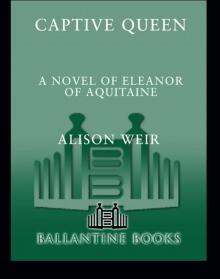 Captive Queen
Captive Queen Innocent Traitor
Innocent Traitor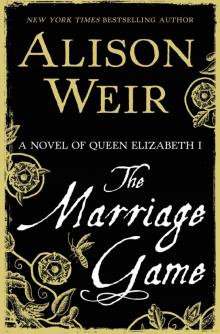 The Marriage Game
The Marriage Game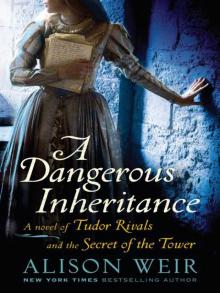 A Dangerous Inheritance
A Dangerous Inheritance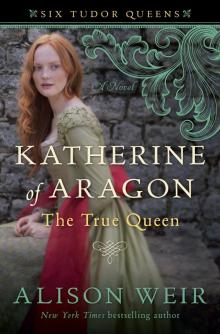 Katherine of Aragón: The True Queen
Katherine of Aragón: The True Queen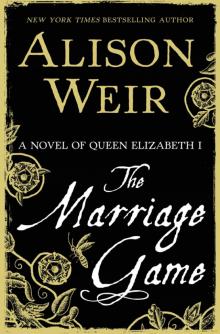 The Marriage Game: A Novel of Queen Elizabeth I
The Marriage Game: A Novel of Queen Elizabeth I Princes in the Tower
Princes in the Tower Anne Boleyn: A King's Obsession
Anne Boleyn: A King's Obsession Traitors of the Tower
Traitors of the Tower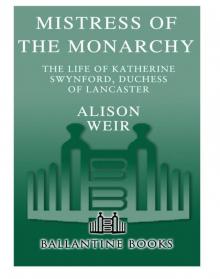 Mistress of the Monarchy: The Life of Katherine Swynford, Duchess of Lancaster
Mistress of the Monarchy: The Life of Katherine Swynford, Duchess of Lancaster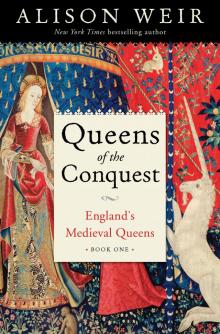 Queens of the Conquest: England’s Medieval Queens
Queens of the Conquest: England’s Medieval Queens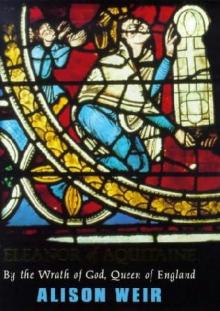 Eleanor of Aquitaine: A Life
Eleanor of Aquitaine: A Life Mary, Queen of Scots, and the Murder of Lord Darnley
Mary, Queen of Scots, and the Murder of Lord Darnley Henry VIII: The King and His Court
Henry VIII: The King and His Court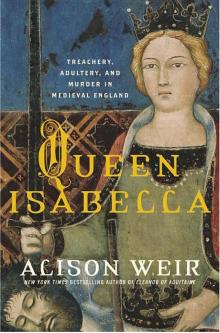 Queen Isabella: Treachery, Adultery, and Murder in Medieval England
Queen Isabella: Treachery, Adultery, and Murder in Medieval England Katheryn Howard, the Scandalous Queen
Katheryn Howard, the Scandalous Queen Arthur- Prince of the Roses
Arthur- Prince of the Roses The Wars of the Roses
The Wars of the Roses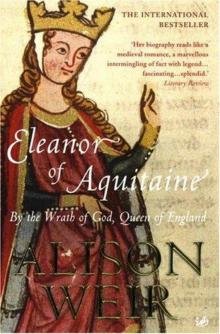 Eleanor of Aquitaine: By the Wrath of God, Queen of England
Eleanor of Aquitaine: By the Wrath of God, Queen of England Mary Boleyn: The Great and Infamous Whore
Mary Boleyn: The Great and Infamous Whore Jane Seymour: The Haunted Queen
Jane Seymour: The Haunted Queen Anna of Kleve, the Princess in the Portrait
Anna of Kleve, the Princess in the Portrait Lancaster and York: The Wars of the Roses
Lancaster and York: The Wars of the Roses The Grandmother's Tale
The Grandmother's Tale The Princess of Scotland (Six Tudor Queens #5.5)
The Princess of Scotland (Six Tudor Queens #5.5) The Lady Elizabeth
The Lady Elizabeth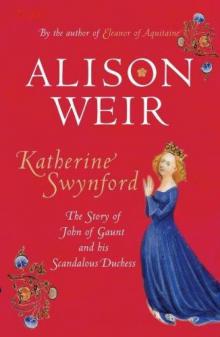 Katherine Swynford: The Story of John of Gaunt and His Scandalous Duchess
Katherine Swynford: The Story of John of Gaunt and His Scandalous Duchess The Curse of the Hungerfords
The Curse of the Hungerfords The Lost Tudor Princess: The Life of Lady Margaret Douglas
The Lost Tudor Princess: The Life of Lady Margaret Douglas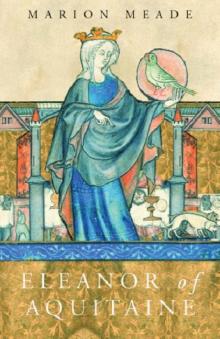 Eleanor of Aquitaine
Eleanor of Aquitaine Mistress of the Monarchy
Mistress of the Monarchy The Lost Tudor Princess
The Lost Tudor Princess Henry VIII
Henry VIII Anne Boleyn, a King's Obsession
Anne Boleyn, a King's Obsession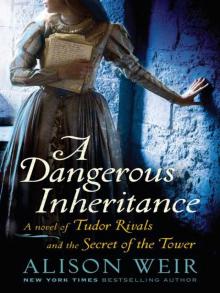 A Dangerous Inheritance: A Novel of Tudor Rivals and the Secret of the Tower
A Dangerous Inheritance: A Novel of Tudor Rivals and the Secret of the Tower Elizabeth of York
Elizabeth of York Katherine of Aragon, the True Queen
Katherine of Aragon, the True Queen Katherine Swynford
Katherine Swynford Wars of the Roses
Wars of the Roses Queens of the Conquest
Queens of the Conquest Mary Boleyn
Mary Boleyn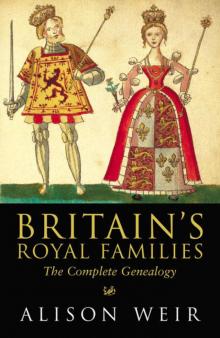 Britain's Royal Families
Britain's Royal Families The Tower Is Full of Ghosts Today
The Tower Is Full of Ghosts Today Life of Elizabeth I
Life of Elizabeth I Anne Boleyn A King's Obssession
Anne Boleyn A King's Obssession Lancaster and York
Lancaster and York Jane Seymour, the Haunted Queen
Jane Seymour, the Haunted Queen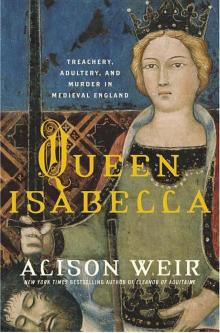 Queen Isabella
Queen Isabella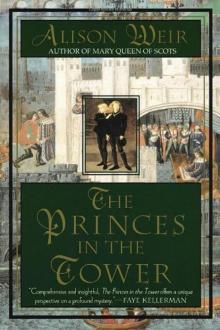 The princes in the tower
The princes in the tower